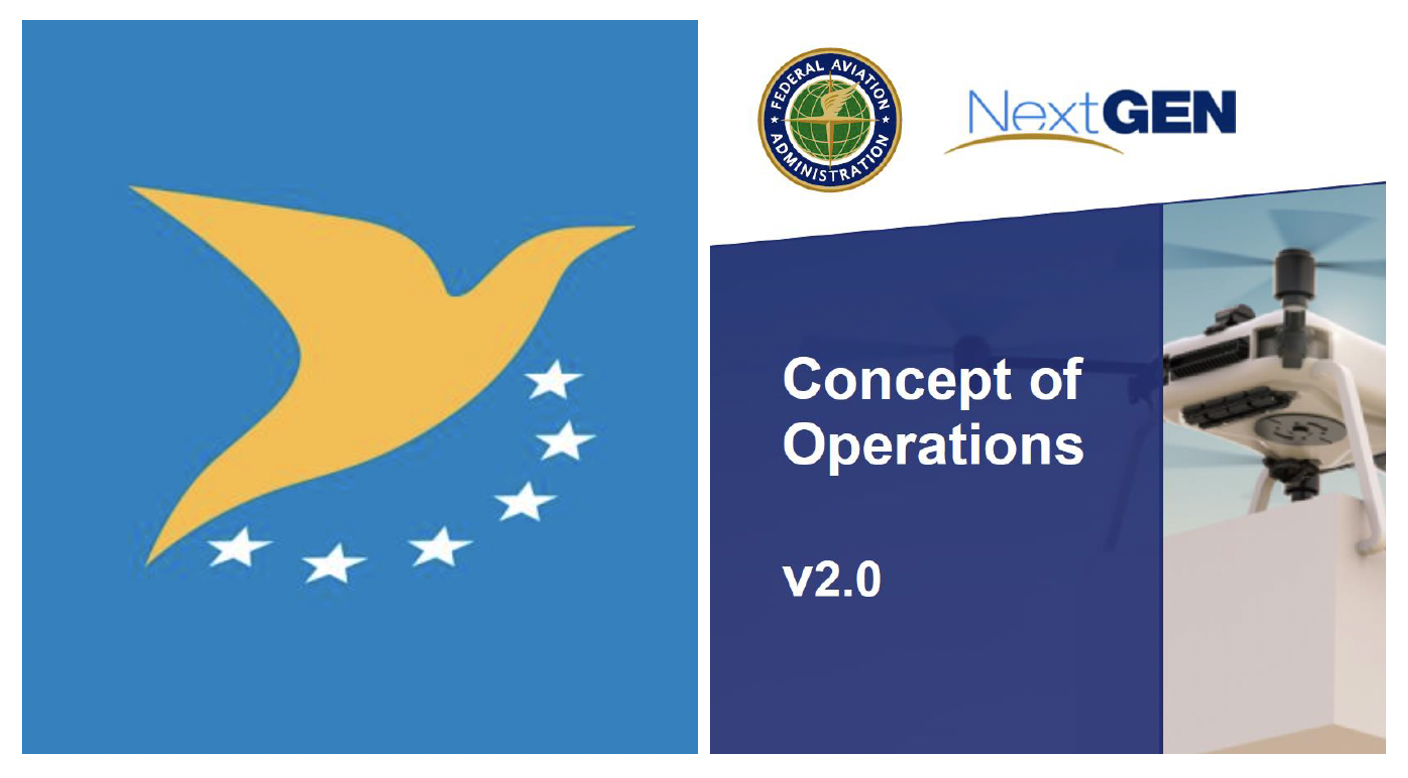Global UAS CONOPs – Two Steps in the Right Direction
The Unmanned Aerial Systems (UAS) industry recently reached two major industry milestones for UAS Traffic Management (UTM) in the US as well as in Europe.
USA
In the US the Federal Aviation Administration (FAA) released Concept of Operations (CONOPS) v2.0 for UTM. FAA UTM ConOps V2.0 continues to focus on low altitude UTM operations below 400 feet above ground level (AGL), however, it also addresses increasingly complex operations within and across both uncontrolled (Class G) and controlled (Classes B, C, D, E) airspace.
FAA CONOPS v2.0 details more complex operations in denser airspace including beyond visual line of sight (BVLOS) operations in controlled airspace. It provides detail on UAS Volume Reservations previously known as Dynamic Restrictions, Data Access and Archiving, Performance Authorizations, UAS Service Supplier (USS) Service Categories, ATM/UTM Contingency Notifications, and Security aspects. A system architecture for remote identification of UAS Operators is also included.
We are thankful for the opportunity for industry players such as ANRA to collaborate with FAA government offices including Office of NextGen, the Air Traffic Organization (ATO), Aviation Safety (AVS), and NASA.
It is great to see the advancement of UTM through use cases, rulemaking, as well as Technical Capability Levels (TCL) and UTM Pilot Program (UPP) demonstrations. We look forward to the evolution of regulation in this space to continue the implementation of UTM into the National Airspace System (NAS).
Europe
The European Union Aviation Safety Agency (EASA) released Opinion 01/2020, a High Level regulatory framework for the U-space on March 13th, 2020. U-space is the European program of services and procedures designed to support safe, secure and efficient access to airspace for large numbers of drones.
The objective of the Opinion is to create the necessary conditions for manned and unmanned aircraft to operate safely in the U-space airspace, mitigating air and ground risks. The Opinion proposes an effective and enforceable regulatory framework to enable technical, operational, and business developments while providing fair access to airspace.
The Opinion proposes four mandatory U-space services: network identification, geo-awareness, traffic information and UAS flight authorization.
The General Requirements for Aircraft Operators and U-space service providers section of the Opinion also details requirements around Geo-Awareness, Flight Authorization, Traffic Information, Tracking, Weather Information, Conformance Monitoring Services, Certification, Exchange of Safety Information and Measures, Pricing of Common Information Service (CIS),
This is a first regulatory step in Europe to permit implementation of the U-space to allow UAS and U-space technologies to evolve. The proposal places emphasis on market competitiveness, as UAS operators will be able to receive the same services and have the same interfaces with U-Space Service Providers (USSPs) to operate in all U-space airspaces across the European Union.
Global regulation is vital to the advancement of the UAS industry. Given that UAS airspace management is a nascent industry, we have a unique opportunity to prevent regulatory fragmentation and work towards harmonized, interoperable operations. ANRA’s US and UK offices are excited about the evolution of the global UAS ecosystem. In two short weeks, we have taken two major steps in the right direction, on both sides of “The Pond.”.







